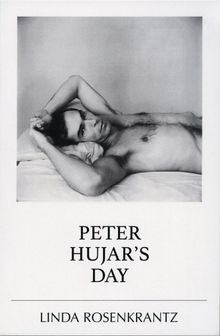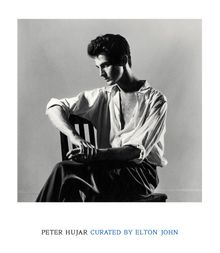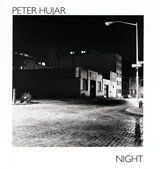| |||||||||||||||||||||||||
PHOTOGRAPHY MONOGRAPHS
|
|
in stock $30.00 Free Shipping UPS GROUND IN THE CONTINENTAL U.S. |
 Peter Hujar's Day
Peter Hujar's Day
Published by Magic Hour Press.
By Linda Rosenkrantz. Edited by Francis Schichtel, Jordan Weitzman. Introduction by Stephen Koch.
On December 18, 1974, the author Linda Rosenkrantz asked her friend Peter Hujar to write down everything he did on that day. Hujar met Rosenkrantz at her apartment on 94th Street the following day, where she asked him about it in detail and tape-recorded their conversation. Peter Hujar’s Day is a full transcript of that exchange, published here for the first time since it was recorded 47 years ago. The book features an introduction by Stephen Koch, director of the Peter Hujar Estate.
Linda Rosenkrantz (born 1934) is a Los Angeles–based, Bronx-born writer and the author of the "repellently raunchy" novel Talk (1969, republished as a New York Review Books Classic in 2015), Telegram! (2003), a history of telegraphic communication, and her memoir, My Life as a List: 207 Things About My (Bronx) Childhood (1999). She is the coauthor of Gone Hollywood: The Movie Colony in the Golden Age (1979). She is also the founding editor of Auction magazine, the coauthor of 10 bestselling books on baby names, and the cocreator of the popular baby-naming site nameberry.com.
PUBLISHER
Magic Hour Press
BOOK FORMAT
Paperback, 5.25 x 8 in. / 56 pgs / 1 color / 4 bw.
PUBLISHING STATUS
Pub Date 11/2/2022
Active
DISTRIBUTION
D.A.P. Exclusive
Catalog: FALL 2023 p. 74
PRODUCT DETAILS
ISBN 9781639442676 TRADE
List Price: $18.00 CAD $26.00 GBP £14.00
AVAILABILITY
In stock
in stock $18.00 Free Shipping UPS GROUND IN THE CONTINENTAL U.S. |
 Peter Hujar Curated by Elton John
Peter Hujar Curated by Elton John
Published by Fraenkel Gallery.
Introduction by Elton John.
Bringing together the sensibilities of two remarkable artists, Peter Hujar Curated by Elton John provides striking proof of how one artist’s eye can shed light on another. Though known worldwide as one of the most revered performers of our era, Elton John is also a seasoned collector of photographs, with an acute and personal understanding of Hujar’s achievement.
Through a selection of 50 photographs, the book presents a wide-ranging survey of Hujar's career. John writes: “Hujar's humanity, depth and sensual insights aren't for everyone, and don't need to be, but once his pictures get into your bloodstream they are impossible to shake.” The publication includes works spanning nearly two decades, featuring portraits of Hujar's eclectic circle of friends, his landmark nudes, atmospheric landscapes, portraits of performers (Stevie Wonder, Peggy Lee and Edgar Winter) and a moving image of the artist with his mother.
Peter Hujar (1934–87) was born in Trenton, New Jersey and moved to Manhattan to work in the magazine, advertising and fashion industries. He documented the vibrant cultural scene in downtown New York throughout the 1970s and 1980s, photographing artists, musicians, writers and performers. Hujar died of AIDS in 1987.
Elton John (born 1947) is one of the most enduringly successful solo artists of all time. In 1992 he founded the Elton John AIDS Foundation, which funds programs to end the AIDS epidemic. Since the 1990s he has avidly collected photography. In 2016, Tate Modern organized the exhibition The Radical Eye: Modernist Photography from the Sir Elton John Collection.
PUBLISHER
Fraenkel Gallery
BOOK FORMAT
Hardcover, 10.5 x 12 in. / 108 pgs / 50 bw.
PUBLISHING STATUS
Pub Date 11/29/2022
Active
DISTRIBUTION
D.A.P. Exclusive
Catalog: SPRING 2023 p. 4
PRODUCT DETAILS
ISBN 9781881337232 TRADE
List Price: $65.00 CAD $90.00 GBP £57.00
AVAILABILITY
In stock
in stock $65.00 Free Shipping UPS GROUND IN THE CONTINENTAL U.S. |
 Peter Hujar: Lost Downtown
Peter Hujar: Lost Downtown
Published by Steidl/Pace/MacGill Gallery.
Text by Vince Aletti.
Peter Hujar (1934–87) was born in Trenton, New Jersey, and moved to Manhattan to work in the magazine, advertising and fashion industries. He documented the vibrant cultural scene of downtown New York throughout the 1970s and 1980s. In 1976 he published Portraits in Life and Death, with an introduction by Susan Sontag. Hujar died of AIDS in 1987.
PUBLISHER
Steidl/Pace/MacGill Gallery
BOOK FORMAT
Hardcover, 10.5 x 11 in. / 56 pgs / 20 bw.
PUBLISHING STATUS
Pub Date 10/25/2016
Out of print
DISTRIBUTION
D.A.P. Exclusive
Catalog: SPRING 2016 p. 41
PRODUCT DETAILS
ISBN 9783958291065 TRADE
List Price: $30.00 CAD $40.00
AVAILABILITY
Not available
STATUS: Out of print | 00/00/00 For assistance locating a copy, please see our list of recommended out of print specialists |
 Peter Hujar: Night
Peter Hujar: Night
Published by Matthew Marks Gallery/Fraenkel Gallery.
Essay by Bob Nickas.
PUBLISHER
Matthew Marks Gallery/Fraenkel Gallery
BOOK FORMAT
Hardback, 10.75 x 11 in. / 100 pgs / 7 bw reproductions.
PUBLISHING STATUS
Pub Date 6/15/2005
Out of print
DISTRIBUTION
D.A.P. Exclusive
Catalog: FALL 2005 p. 84
PRODUCT DETAILS
ISBN 9781880146453 TRADE
List Price: $50.00 CAD $60.00
AVAILABILITY
Not available
STATUS: Out of print | 12/1/2010 For assistance locating a copy, please see our list of recommended out of print specialists |
